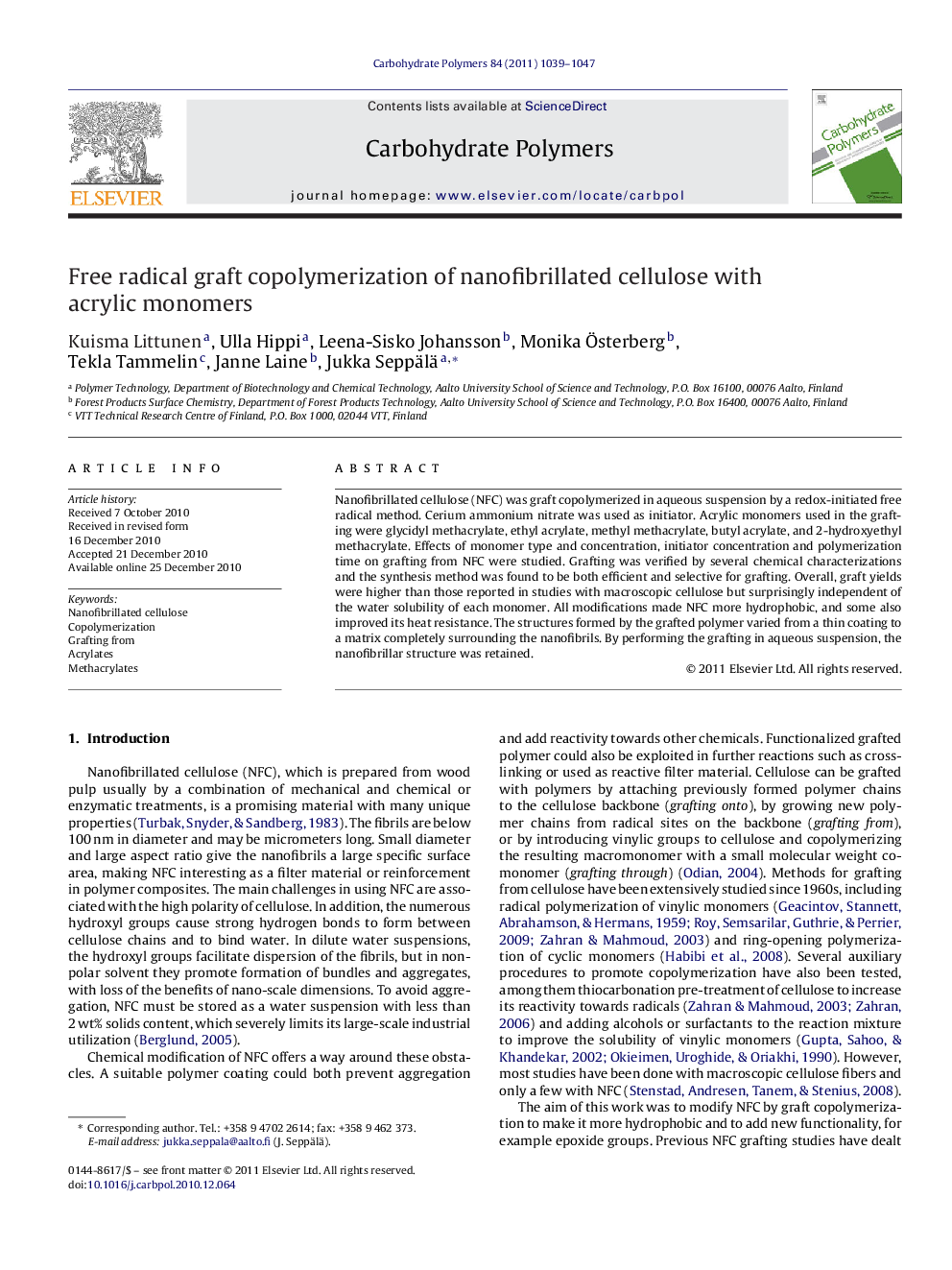| Article ID | Journal | Published Year | Pages | File Type |
|---|---|---|---|---|
| 1386610 | Carbohydrate Polymers | 2011 | 9 Pages |
Nanofibrillated cellulose (NFC) was graft copolymerized in aqueous suspension by a redox-initiated free radical method. Cerium ammonium nitrate was used as initiator. Acrylic monomers used in the grafting were glycidyl methacrylate, ethyl acrylate, methyl methacrylate, butyl acrylate, and 2-hydroxyethyl methacrylate. Effects of monomer type and concentration, initiator concentration and polymerization time on grafting from NFC were studied. Grafting was verified by several chemical characterizations and the synthesis method was found to be both efficient and selective for grafting. Overall, graft yields were higher than those reported in studies with macroscopic cellulose but surprisingly independent of the water solubility of each monomer. All modifications made NFC more hydrophobic, and some also improved its heat resistance. The structures formed by the grafted polymer varied from a thin coating to a matrix completely surrounding the nanofibrils. By performing the grafting in aqueous suspension, the nanofibrillar structure was retained.
